- News
- Reviews
- Bikes
- Accessories
- Accessories - misc
- Computer mounts
- Bags
- Bar ends
- Bike bags & cases
- Bottle cages
- Bottles
- Cameras
- Car racks
- Child seats
- Computers
- Glasses
- GPS units
- Helmets
- Lights - front
- Lights - rear
- Lights - sets
- Locks
- Mirrors
- Mudguards
- Racks
- Pumps & CO2 inflators
- Puncture kits
- Reflectives
- Smart watches
- Stands and racks
- Trailers
- Clothing
- Components
- Bar tape & grips
- Bottom brackets
- Brake & gear cables
- Brake & STI levers
- Brake pads & spares
- Brakes
- Cassettes & freewheels
- Chains
- Chainsets & chainrings
- Derailleurs - front
- Derailleurs - rear
- Forks
- Gear levers & shifters
- Groupsets
- Handlebars & extensions
- Headsets
- Hubs
- Inner tubes
- Pedals
- Quick releases & skewers
- Saddles
- Seatposts
- Stems
- Wheels
- Tyres
- Health, fitness and nutrition
- Tools and workshop
- Miscellaneous
- Tubeless valves
- Buyers Guides
- Features
- Forum
- Recommends
- Podcast
feature
Rim brakes really are dead! Here's why the British National Hill Climb champion has switched to disc brakes
Up until now, there has always been one safe haven for rim brake bikes...hill climbing, but has Andrew Feather's win at the 2023 National Hill Climb on his new disc brake bike put an end to this? We've asked him the big questions and drilled down into his component choices to find out!
Over the past decade or so, many road bikes have gone from externally cabled, lightweight, round-tubed designs to much bulkier, aero steeds which now nearly always have disc brakes. Whether you love them, hate them, or have no real strong opinion on disc brakes, it is undeniably getting rather tricky to buy a new bike with rim brakes, because a number of the top bike brands no longer offer them.
However, as cyclocross bikes, gravel bikes, the aforementioned road bikes and even time trial bikes have turned their back on the trusty rim brake, there has, up until now at least, always been one genre of cycling where rim brakes have continued to rule supreme - hill climbing!
We were slightly surprised, then, when four-time British National Hill Climb champ Andrew Feather rocked up on his new disc brake bike which he has since ridden to victory at this year's event.
Feather completed the Struggle in an impressive 11 minutes and 48 seconds, outriding Ed Laverack in second place by a notable 18-second margin and leaving Paddy Clark in third a full 1 minute and 17 seconds behind.
> The stuff they never tell you about rim brakes
In a hill climb - the quintessentially British racing format which sees competitors aim to get from the bottom to the top of a hill in as little time as possible - it's incredibly rare that you would ever need to even touch your brakes, and it’s fair to say that they’re only on hill climb bikes to satisfy the regulations and keep the commissaires happy.
Therefore, when competitive hill climbers build custom light road bikes to drop grams and give themselves every advantage, they tend to always go for the most gravity-defying option. Up until now, common knowledge was that such a gravity-defying machine would have to be built around rim brakes to keep things as light as possible.
> The lightest road bike frames and components in the world
The last time we caught up with the very appropriately-named hill climb expert, Feather had just won the 2022 hill climb champs aboard a custom Cannondale SuperSix Evo Hi Mod weighing in at just 5.39kg. This year, he's (arguably) upgraded to the newer generation SuperSix Evo LAB71, which has disc brakes.
While this new build is still super light at under 6kg, why would you want to add weight when the aim of the game is getting up a hill as quickly as possible?
"Disc brake bikes in general are becoming lighter and lighter", says Feather.
"The frame is generally more aero than the previous iterations... there are often certain parts of a climb where you are going downhill or it's flat, so those advantages will come into play."
The other bits
That's not to say Feather hasn't attempted to get the bike as featherweight as possible, adorning it with components from lightweight carbon specialists Schmolke. The saddle, stem and handlebars are made by the Germans, and that saddle isn't as rough as it looks, so we're told: "I actually find the harder saddles are more comfortable. Yes it looks very hard, but it's fine if you've got in the right position and are used to riding like that."
Although some hill climbers go the extreme length of cutting the drops off their handlebars to cut even more weight, Feather says he isn't a fan: "There just such nice bars! I'm using the bike as an ordinary bike as well, so I don't really fancy riding around with bars cut off. It would just look really ugly."
Things get more technical with Feather's 3D-printed out-front computer mount, that was specially made by a Swedish farmer (who happens to also be a 3D-printing expert) to fit the Schmolke stem and bar combo.
While he doesn't tend to look at power for most of his effort, Feather also opts to run a Rotor INspider power meter during races despite the slight weight penalty: "I tend to do my best rides when I'm not looking at my power, but it's always handy, particularly at the start, to have a quick glance at power to make sure you're not setting off at 600 watts for a ten-minute effort," says Feather.
"It's still 150g, but I'd rather have that on and be able to assess the data than not have it on."
British wheel brand Hunt has done Feather a favour this year by launching some disc brake versions of its Hill Climb SL wheels. They weigh in at just 963g and "ride really nice" according to Feather.
While Hunt was still able to make the wheels super light for disc brakes, incorporating more popular tubeless tyre compatibility without adding significant weight wasn't so easy, so the wheels take tubular tyres.
Disc brakes??
Even though the disc brake switch has added some weight, that's not to say Feather hasn't tried his hardest to reduce it as much as possible. The rotors front and rear are 140mm, rather than the more common 160mm front/140mm rear combination. Although the rotors on Feather's built bike are Shimano Dura-Ace, he's planning to replace them with some titanium ones from US specialists Carver Bikes that weigh just 49g.
"I haven't used them yet, but I'm really interested to see what they're like," he says.
So, back to our original musings: what's the explanation for the switch, especially since this bike is around half a kilogram heavier than Feather's national title-winning steed we saw last year? Are rim brakes truly dead?
"I think [rim brakes aren't dead] at the moment, there are still rim brake bikes around, but if you look at the latest technology it is all disc really", says Feather.
"The weights are coming down and the margins are pretty small", says Feather.
So, there you have it. Even the best hill climber in the country has made the switch to disc brakes.
Now that discs have infiltrated the top of the hill climbing scene, do you see any way back for road bikes with rim brakes? Let us know in the comments as always...
Jack has been writing about cycling and multisport for over a decade, arriving at road.cc via 220 Triathlon Magazine in 2017. He worked across all areas of the website including tech, news and video, and also contributed to eBikeTips before being named Editor of road.cc in 2021 (much to his surprise). Jack has been hooked on cycling since his student days, and currently has a Trek 1.2 for winter riding, a beloved Bickerton folding bike for getting around town and an extra beloved custom Ridley Helium SLX for fantasising about going fast in his stable. Jack has never won a bike race, but does have a master's degree in print journalism and two Guinness World Records for pogo sticking (it's a long story).
Latest Comments
- AidanR 1 sec ago
Sorry, but I have little sympathy for Wiggins. Per the latest set of accounts (2018), by far the biggest asset was a director's loan to Wiggins. In...
- GMBasix 9 min 2 sec ago
Self control: I've got the ride home to think about.
- mark1a 28 min 45 sec ago
That will be along in a week or so in the annual reboot of the "All I want for Christmas is... not this" article along with the Park Tool pizza...
- quiff 41 min 6 sec ago
For that money, I'd go to Matthew Sowter - https://www.saffronframeworks.com/
- chrisonabike 43 min 6 sec ago
There's a lot there....
- hawkinspeter 47 min 48 sec ago
The problem with most jeans (i.e. not cycling designed ones) is that they've got the seam where it can intefere/chafe with the saddle. Also, cotton...
- hawkinspeter 52 min 22 sec ago
Why do the police have to wait for the council to install CCTV cameras? Can't they go and put one there themselves - it doesn't even have to be a...
- quiff 1 hour 2 min ago
I think momove's middle paragraph was sarcastic....
- mdavidford 1 hour 20 min ago
I'm not sure commercial success is even particularly high on his list of priorities for it - it's much more about the leverage it gives him for...
- the little onion 4 hours 37 min ago
Rather artistic photo of this (driverless) car that has ended up on its roof on a dead straight road in Bradford....


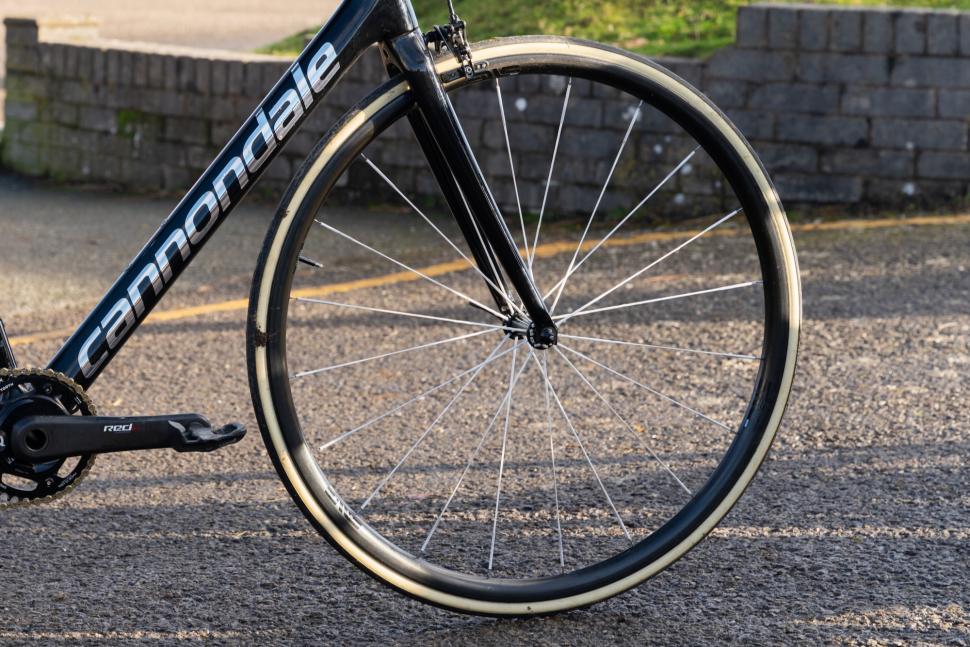

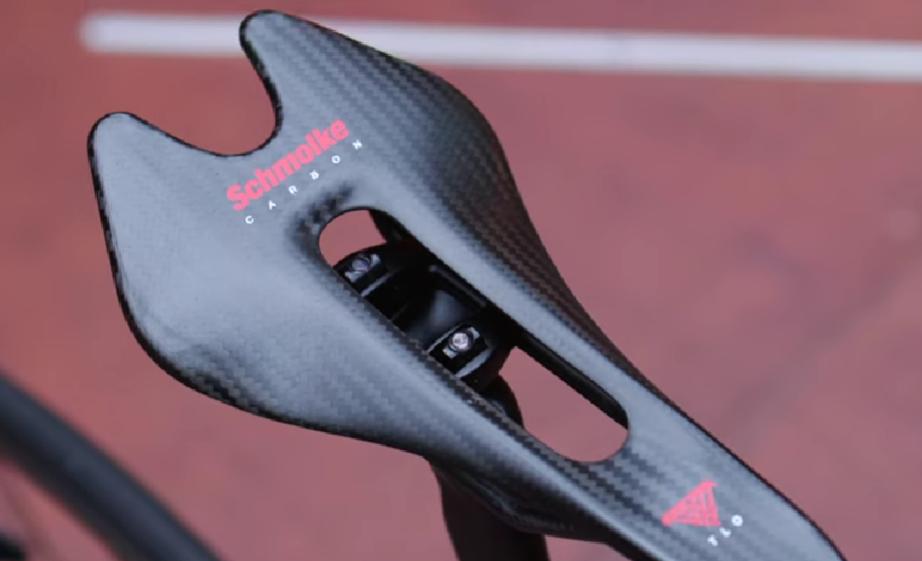
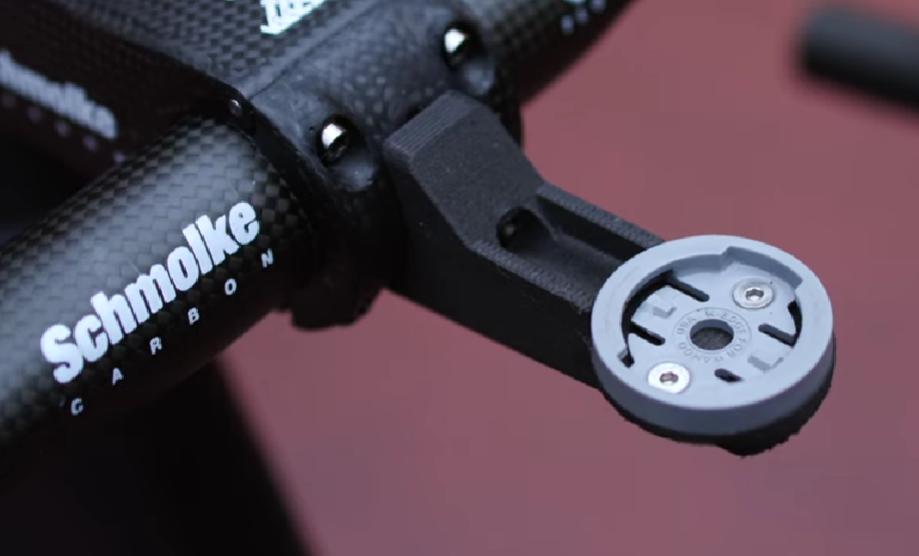

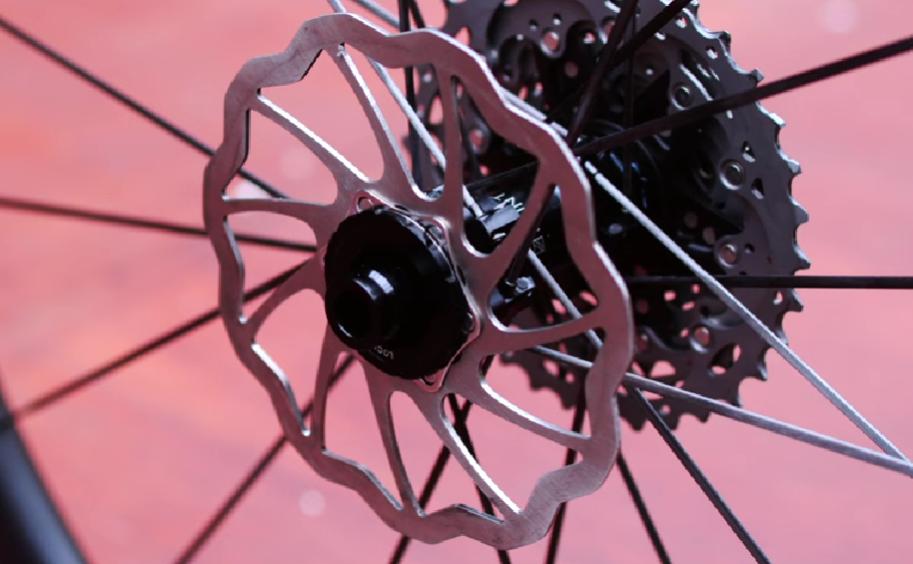
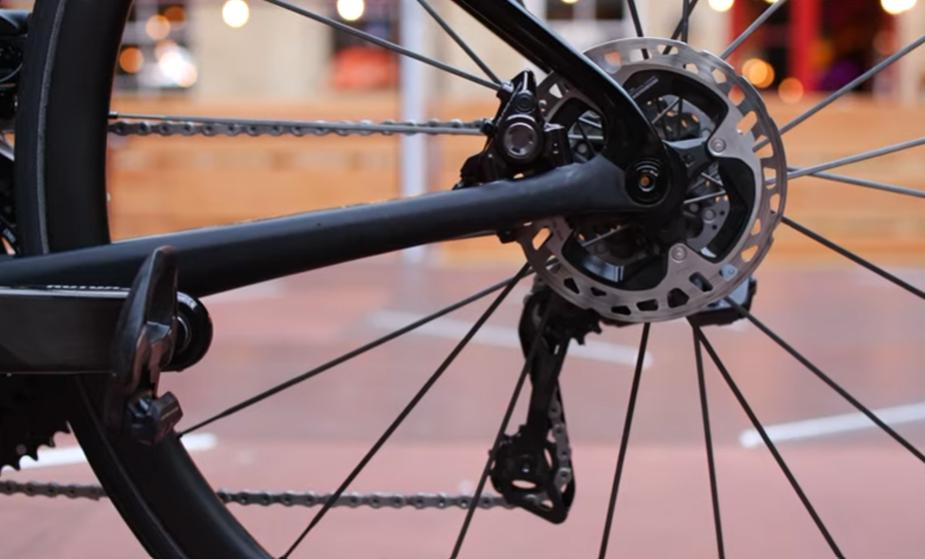
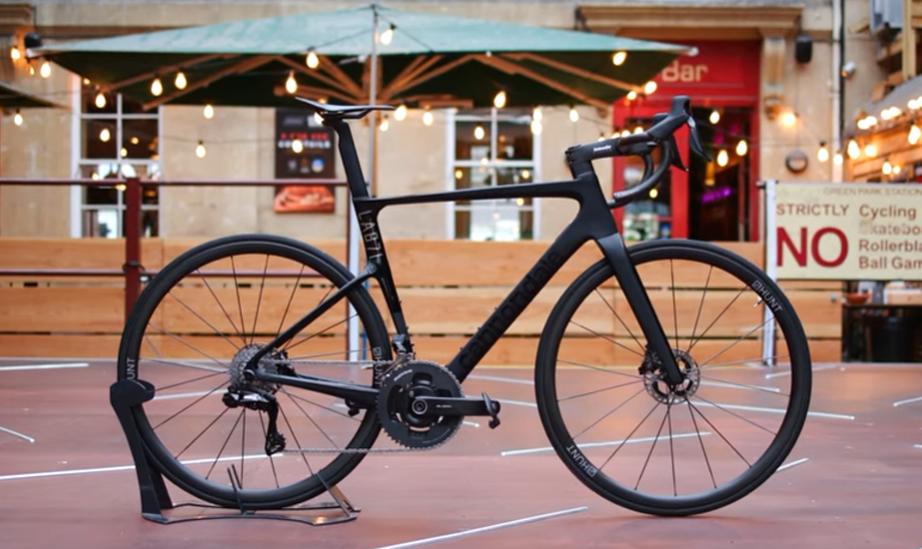
Add new comment
62 comments
Hmm....okay....
More marketing hype by Jack Sexty and the bike manufacturers that pay him to force us into complying with new, expensive, but worthless junk. All any of you have to do is study the history of the average speeds at the TDF, then come back here and prove to us that disk brakes are really doing something...LOL! Spoiler alert, from 1958 till 1984 the average speed only went up about 1.5 mph, then in 1984 the average speed went up another 1.5 mph due to the introduction of clipless pedals, since then...NOTHING! Going from steel to aluminum to carbon fiber to aero to tubeless, you name it, all for nothing. The only reason we even see a slight increase is because since 1958 till today, the average total miles raced in the TDF has been reduced by around 500 miles, thus the riders are not as fatigued as they used to be.
Completely ignoring the facts that a) there is considerably more climbing now than in the 80s, very few long totally flat days, and they are choosing tougher and tougher climbs, b) very few if any are on EPO any more, and c) the primary reason for discs is that they're safer, not faster.
A strange argument - that a type of brake doesn't make you faster. Have you not got the idea of these brake things yet, then?
There are many cogent reasons for preferring disc brakes over rim brakes .... but probably none that have to do with going faster. (Some invent such reasons - "I can approach the corner faster" - but these tend to be made-up-stuff). However, for ordinary folk not "needing" to knock 5 seconds off some strava-striver daft-data thingy, disc brakes have many advantages.
Personally I've given up the notions that a couple of hundred grams lighter or more aero by 5 seconds per 50 kilometres is somehow important in a bicycle. That sort of stuff is for professionals (not to improve their performance but to improve their marketing value). But some bike technologies are genuinely useful improvements - to ordinary cyclists of every kind.
In short, unless you're a top class racing cyclists, you probably need to eschew all that marketing stuff about light weight and aero in favour of other genuinely useful bike tech improvements.
These improvements include STI, disc brakes and tubeless tyres. Of course, they don't make the older bike tech redundant, just another choice. Many , though, seem to choose them for aesthetic reasons rather than functional reasons, even if they want to bolster their choice by dissing new tech. But perhaps, instead, because of their lock-in (via what they own now) to those older technologies.
Bring back single speeds, wooden rims and unmade roads! Progress, pah!
What a completely dumb post! Congratulations.....
Peculiar handlebar setup. I would have thought a lower stack with hoods tilted down be more apt when the road points up.
"Rim brakes are dead"
Except for those who want compatibility with existing bikes. I have 8 bikes, all rim braked, all set up the same with interchangeable wheels etc. Why would I want an outlier that if it's broken is off the road, where anything else can get a quick wheel stop and be on my way? One complete outlier to the usual maintenance schedules and protocols, go back to bleeding brakes like I did when I rode motorbikes? No thanks, rim brakes are good enough, simple and reliable and almost never squeal, blocks last longer than disc pads and cost less and are less of a faff to change. (Note - I also don;t have carbon brake surface wheels, avoiding that whole carbon rim / rim brake turd to step in.)
No thanks, rim brakes are good enough, simple and reliable and almost never squeal, blocks last longer than disc pads and cost less and are less of a faff to change
Wow! 7 contentious claims in one sentence, with the last 4 definitely untrue
Rim brakes are good enough - true for many cycling styles, habits and conditions. However, having now used disc brakes for around 7 years, in parallel with other bikes still having calliper brakes, I'll contend that there are conditions when having disc brakes provides more function, facility and feature than rim brakes.
* Long steep descents when your hands must work harder on the levers with rim rather than (hydraulic) disc brakes.
* Much less wear on pads and discs than on rims and brake blocks in mucky winter conditions.
* No reduction in disc function when its seriously wet, unlike with rim brakes.
* Some others, probably.
***********
Simple, reliable and almost never squeal - true up to a point but ...
* Brake cables can get sticky, frozen, rusty, detached and break without constant maintenance, unlike the hoses and fluids of hydraulic disc brakes.
* Some find setting the toe-in of brake blocks very difficult whislt the cantilever users can be reduced to tears by the difficulty of setting them up. It can also be a pain to get and keep some rim brakes centred on the rim. Brake blocks of some kinds can squeal - in winter its the grinding noises that worry me, though. None of these are a problem with hydraulic discs.
**************
Blocks last longer than disc pads and cost less and are less of a faff to change - that depends on the blocks and pads.
* The blocks I use for winter are soft, to improve use in the wet and to try to transfer the wear from rim to block. Metallic disc pads can last a long time albeit some are squealy.
* Some brake blocks cost more than some disc pads.
* It takes far less time for me to change (or take off and clean) disc pads than it does to do so with calliper brake blocks, which usually have to be re-centred and toed in, unlike disc pad replacements which always puts them in the exact same position they were before taking them out, via a small clip and one screw.
* Brake blocks get contaminated with much more grit, bits of aluminium and other detritus than do disc pads.
**************
In short: good rim brakes are good enough but good disc brakes are better.
Cugel, gulping down the chum - yum-yum.
Yes, if I were to start again from scratch I expect I would have to give in and get a disc brake bike if buying new, but I'd really rather not.
My two most recently acquired bikes are built up from secondhand framesets and components I've swapped between two other existing bikes that all complement one and other. I like the interoperability and not having to buy any more specialist tools. They have rim-brake wheelsets with 8/9/10/11 speed compatible hubs.
Modern off-the-peg bikes - and groupsets - don't offer what I want in terms of a good all rounder (sort-of Audax mudguard bikes with road triples). So I'm preserving my little fleet in aspic and hoarding stuff. Hey ho...
I was in this position recently, the model I wanted was still available in rim or disc guises but (tinfoil hat conspiracy alert!) the shop and distributor seemed to be making it extra difficult for me to order the rim brake model.
Since the shop had a disc brake version in my size and on display I was really tempted, but I baulked at paying the extra money for a bike that would be heavier than the rim brake equivalent and with lower quality parts (despite costing more!), and would re-introduce me to the world of squealing and rubbing disc brakes (from seeing riding buddies with new bikes I am not convinced that manufacturers have adequately resolved either issue).
I couldn't do it in the end so emailed the manufacturer direct and eventually got my hands on the rim brake model instead.
Here I can help you with this and hopefully put your mind at rest, there's no conspiracy and the retailer was not in the pocket of "big disc"
Perhaps the reason the retailer was reluctant to order a whole new bike is there hiding in plain sight in your post:
I hope that's cleared it up.
Yeah... I thought by writing 'tinfoil hat conspiray alert' I was sort of aluding to that not being a serious comment.
The one in the shop was another customer's bike, they would have had to order another one for me regardless, but appreciate I didn't make that clear in my post.
How much time do you spend cleaning your rims and how long do your wheels last ?
Do you do any commuting?
I'll respond, I hope that's OK.
Year-round commuter here, usual route is 11 miles each way on often narrow, muddy country lanes. Cheap wheels (nearly-new Giant PR-2s from someone local) have been on for 2.5 years & 13,500 km with loads of life left. £11 Kool-Stop pads last up to 18 months. When it's wet I may wash my rims and pads daily but it doesn't take long.
I'm sure a disc-braked bike would be better but I'm not prepared to buy a complete new bike just to save a bit on rim wear. Also, it's not worth much so I can leave it in town without fretting too much about the risk of it being stolen.
Am I practicing a false economy by using £1 brake pads? I see they have shards of aluminium in them when I come to replace them. I should really clean my rims and pads more, but never get round to it. Would Kool Stop pads make my rims last longer?
All pads will pick up bits of alumium from alloy rims. But yes, you should clean your rims and pads regularly. My commuter bike's wheels get cleaned daily in wet weather due to the state of the lanes I ride on and my desire to make the wheels last a good while.
Kool-Stop better than standard pads, including Shimano - salmon for the commuter, black for the dry weather bike. For v-brakes I fit cheap Fibrax ASH104, which work well and are kind to rims.
The noise about 'the death of rim brakes' is sooo boring. Bikeradar featured some of the lightest bikes at the National HC, not all were hyper-expensive and dripping with bling components:
https://www.bikeradar.com/features/pro-bike/2023-hill-climb-nationals-tech/
That's all well and good but in the end you've still got to pedal, and the bike is a small percentage of total weight.
How do you know your brake blocks last longer than disc pads, if you've never used discs
...always handy, particularly at the start, to have a quick glance at power to make sure you're not setting off at 600 watts for a ten-minute effort...
I know, I hate it when I do that!
"the quintessentially British racing format which sees competitors aim to get from the top to the bottom of a hill in as little time as possible"
call me a pedant but I thought hill climbing generally went up not down
Best screenshot that before they edit it!
The hard part is probably when going down, as you're knackered and your lightweight bits have mostly broken off, including brake parts, so it can be hard to steer, stop or stay on.
Meself, I can think of several different and much more pleasurable ways to be a masochist .... although it helps to have an understanding sadist about. On the other hand, it is traditional in many kinds of cycling to find ways to suffer pointlessly. You can Yorkshire-boast about it later.
Did I ever tell you about the time we went up to the top of Barbondale from Gawthrop in 6 inches of snow and ... [No boasting - Lancashire, Yorkshire, Cumbrian or even Westmorland - the forum boring-old-cyclist monitor]
Wots this? No drilled parts!?
Them disc brakes could be drilled, especially through the pads and pistons. Perhaps the hoses could also be holed to weight reduction effect, as the fluid would also run out, saving several grams.
Do hill climbers really need to wear clothes? After all, they must get quite warm going like loons up the slopes.
How many have eating disorders?
These days people pay big money to get Swedish farmers, German carbon fibre specialists etc to make ultralight / one-off components. Schmolke carbon bar & stem combo is about 240g and €1,000.
The scales shown in the video showed 5.79 kg, still 0.4 kg more than his old bike.
Ed Laverack runs discs on his Factor and Specialized Aethos-based builds have been popular. Maybe Andrew is sponsored by Cannondale and riding what they gave him. He has tagged them in his recent instagram posts - https://www.instagram.com/andrew.feather84/
Rim brakes are not 'dead' but there will surely be fewer and fewer options for those wanting components other than basic OEM level.
Also, if regulations state that only one brake is required why not remove the disc, calipers and hoses for the rear and save even more weight?
It states in the article that Andrew Feather uses this for general riding, not just hillclimbing (which is why the bars aren't cut), the weight is all the more impressive for the compromises that haven't been made IMO.
Hillclimb bikes need to be road legal so the only way the could run a single brake is to have a fixed wheel with locknut which will count as a back brake, the other brake must then be on the front wheel.
Thanks, I have no idea why I had that 'one brake' idea in my head. Cheers
Eventually they'll allow removal of the rider, who will operate the feathery bicycle via remote control. After all, cycling is moving inexorably from being a pastime of humans to being a means to develop and sell over-priced techno-bling that ideally weighs nothing and so doesn't exist except as "a concept".
Perhaps the whole hog will eventually be gone and the riderless bikes will be raced by AIs somewhere in Saudi Arabia? However, "owners" will be allowed to pay a vast sum to have their ownership declared in big letters on the bicycles, so they can boast about it in a virtual cafe, via an avatar that looks like Cav although it's being employed by a "bike owner" that looks more like Jabba the Hutt.
Pages